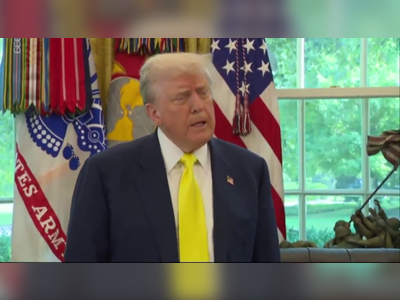Moody's Downgrades US Credit Rating Amid Rising Debt Concerns
The rating agency decreases the US credit rating from Aaa to Aa1, citing escalating national debt and future fiscal challenges.
Moody's Investors Service has downgraded the United States' credit rating from Aaa to Aa1, making it the third major rating agency to take this step following similar actions by Fitch and S&P Global.
This downgrade reflects concerns over the rising levels of national debt and the increasing costs of servicing that debt.
The agency's assessment highlights that the US's debt levels have grown disproportionately higher than those of other nations holding top-tier credit ratings.
Despite acknowledging the economic and financial strength of the US, Moody's stated that these factors no longer adequately compensate for the deterioration in fiscal health over the past decade.
The downgrade is expected to impact the cost of borrowing for the US government, as increased yields on government bonds often accompany such credit rating changes.
The US is currently facing an annual budget deficit close to $2 trillion, representing over 6% of its GDP. Moody's projects that if current policies remain unchanged, the deficit could approach nearly 9% of GDP by the year 2035.
Moody's has indicated a 'stable' outlook following the downgrade, suggesting that no further immediate action is anticipated.
In response to the rating change, the White House expressed criticism of the agency's decision.
Steven Cheung, the White House Communications Director, labeled Moody's chief economist Mark Zandi as a political adversary to former President Donald Trump, challenging the credibility of his analyses, although it was noted that Zandi operates in a different division from the credit rating service.
Government bonds, considered a safe haven for investors, faced fluctuations in yield following the news of the downgrade and ongoing deliberations in Congress regarding tax and spending proposals, which are feared to exacerbate the deficit crisis.
The rating downgrade by Moody's aligns with a broader trend of fiscal challenges faced by the US government, raising concerns over long-term economic stability and the potential implications for global financial markets.
This downgrade reflects concerns over the rising levels of national debt and the increasing costs of servicing that debt.
The agency's assessment highlights that the US's debt levels have grown disproportionately higher than those of other nations holding top-tier credit ratings.
Despite acknowledging the economic and financial strength of the US, Moody's stated that these factors no longer adequately compensate for the deterioration in fiscal health over the past decade.
The downgrade is expected to impact the cost of borrowing for the US government, as increased yields on government bonds often accompany such credit rating changes.
The US is currently facing an annual budget deficit close to $2 trillion, representing over 6% of its GDP. Moody's projects that if current policies remain unchanged, the deficit could approach nearly 9% of GDP by the year 2035.
Moody's has indicated a 'stable' outlook following the downgrade, suggesting that no further immediate action is anticipated.
In response to the rating change, the White House expressed criticism of the agency's decision.
Steven Cheung, the White House Communications Director, labeled Moody's chief economist Mark Zandi as a political adversary to former President Donald Trump, challenging the credibility of his analyses, although it was noted that Zandi operates in a different division from the credit rating service.
Government bonds, considered a safe haven for investors, faced fluctuations in yield following the news of the downgrade and ongoing deliberations in Congress regarding tax and spending proposals, which are feared to exacerbate the deficit crisis.
The rating downgrade by Moody's aligns with a broader trend of fiscal challenges faced by the US government, raising concerns over long-term economic stability and the potential implications for global financial markets.
Translation:
Translated by AI
AI Disclaimer: An advanced artificial intelligence (AI) system generated the content of this page on its own. This innovative technology conducts extensive research from a variety of reliable sources, performs rigorous fact-checking and verification, cleans up and balances biased or manipulated content, and presents a minimal factual summary that is just enough yet essential for you to function as an informed and educated citizen. Please keep in mind, however, that this system is an evolving technology, and as a result, the article may contain accidental inaccuracies or errors. We urge you to help us improve our site by reporting any inaccuracies you find using the "Contact Us" link at the bottom of this page. Your helpful feedback helps us improve our system and deliver more precise content. When you find an article of interest here, please look for the full and extensive coverage of this topic in traditional news sources, as they are written by professional journalists that we try to support, not replace. We appreciate your understanding and assistance.











